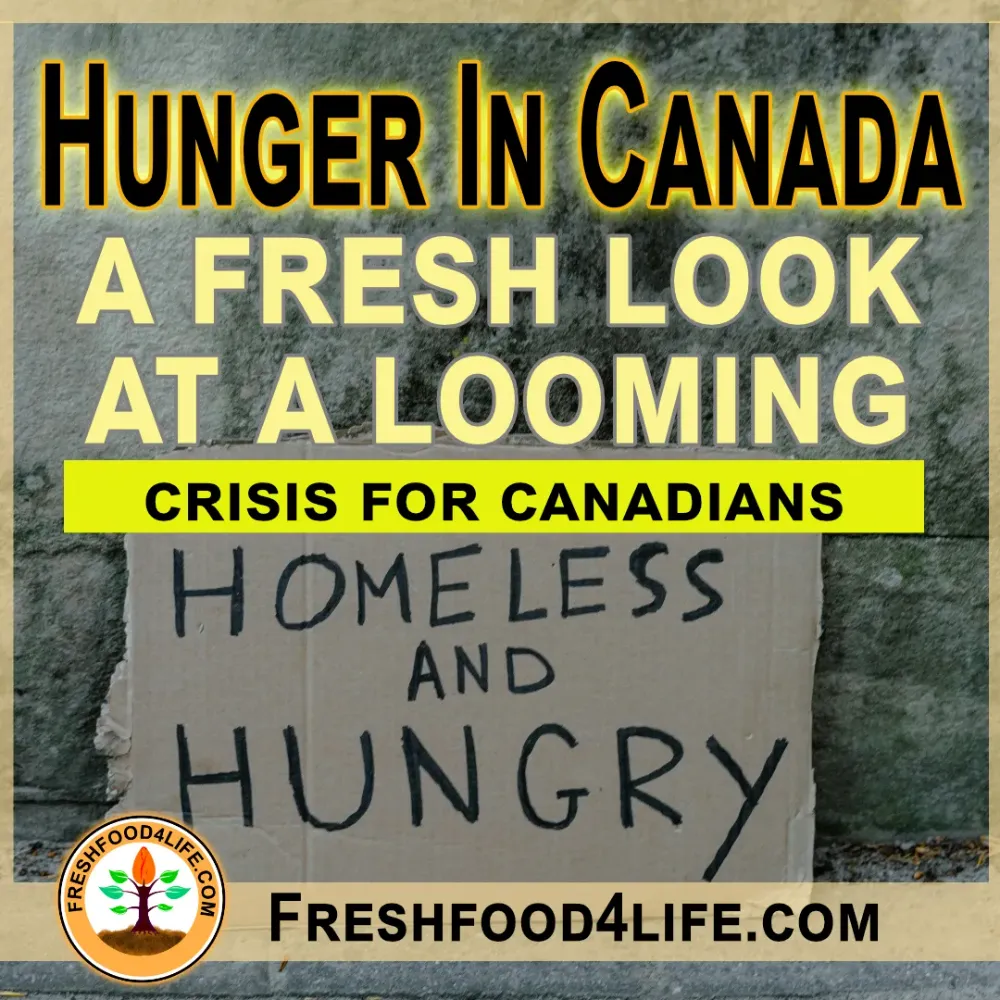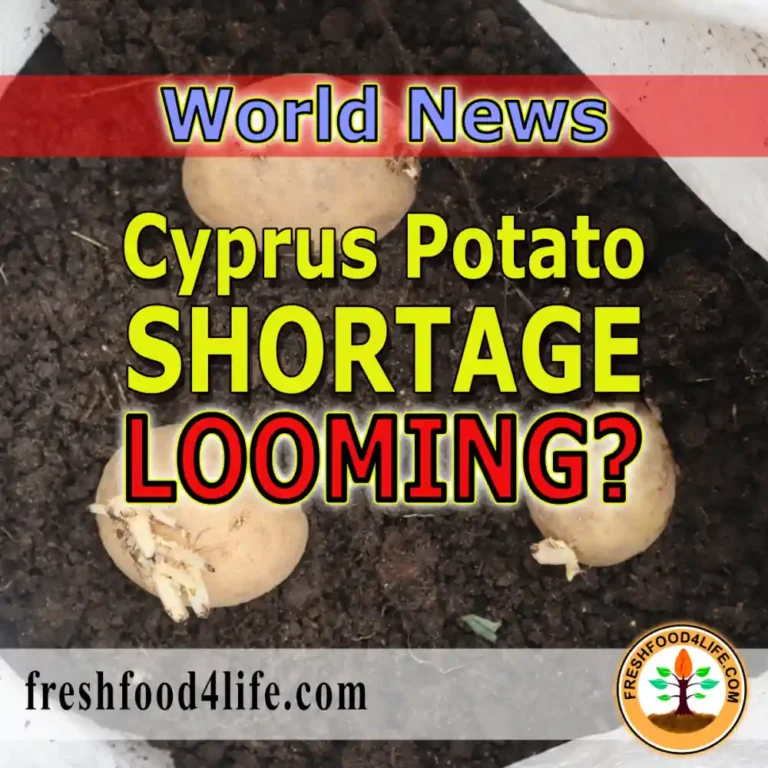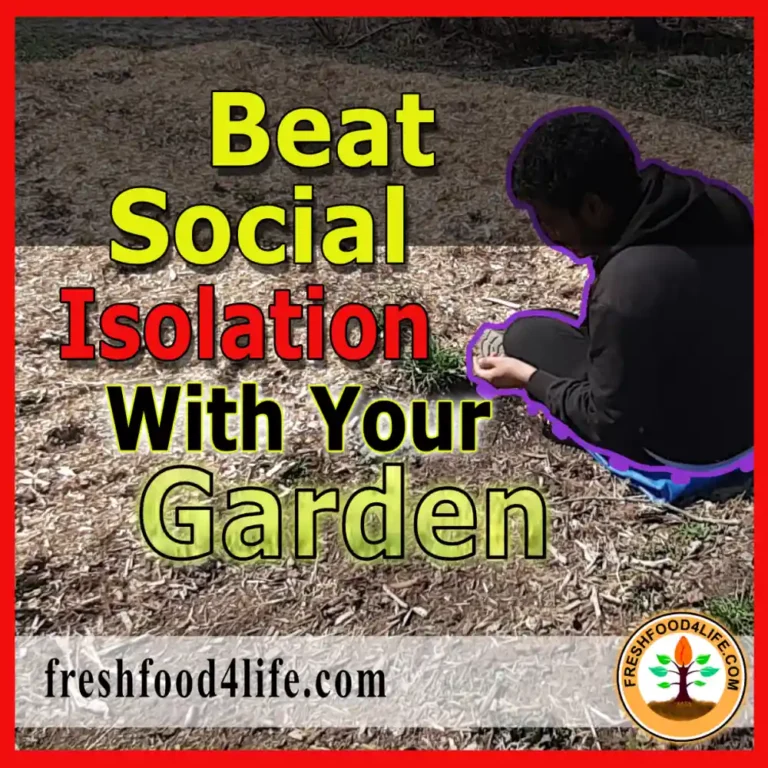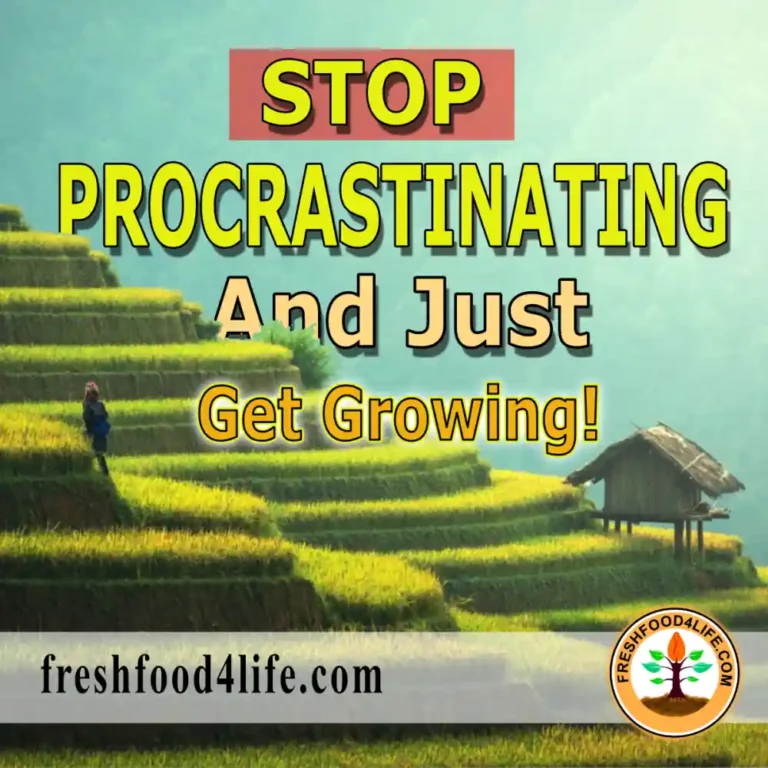Published: November 22, 2024 Last Updated: December 9, 2024

Food insecurityFood Insecurity Food insecurity is a sanitized way to describe the risk of hunger or starvation. It refers to household-level economic and social condition represented by limited or uncertain access to adequate food. It is not necessarily synonymous with hunger, although hunger can be an outcome of food insecurity. (hunger in Canada) is a problem that still plagues Canadians more than 20 years after I first began speaking out on the topic. I absolutely hate the fact that Canadians or any humans have to suffer with food scarcity or hunger or starvation. I really believe that it is a poor reflection on all of us in society when those less fortunate than us are facing such a tragedy. Let’s explore a topic that must be discussed if we are to make progress.
Table of Contents
The State of Hunger in Canada NOW
I’m ashamed of the way hunger is raging in Canada and anyone with love and kindness in their heart should feel the same too. In March of 2024, Canada reached a record-breaking (and utterly sad) milestone — over 2 million visits to food banks, the highest number in Canadian history. Can you imagine that? In a prosperous first world advanced country like Canada there was the largest surge in food bank usage.
What went wrong? This surge in food bank usage reflects a deeper, more troubling trend: the growing levels of food insecurity, economic hardship, and the failure of our current systems to address these issues. Now is the time to take a hard look at the factors contributing to this crisis and what can be done to fix it.
Factors Contributing To Hunger
There are numerous factors which can all contribute to a greater or lesser degree on the outcome of food insecurity. My passion for addressing poverty came from my time back in university when I was an intake coordinator at a small foodbank in Toronto. My position as intake coordinator meant that I was to assess folks to see if they qualified for the free food basket especially since our supplies were limited and we tried our best to stretch it. That was more than twenty years ago. Here were some of the things which contributed to hunger then:
- Salary or income was very low so the clients could not afford food
- Expenses were very high including rent, phone, etc
- People had little to no options for bettering their financial situation
- Some people were dealing with being elderly, disability, mental health, or substance addiction
- Some people faced language barriers, discrimination, or other barriers
These were some of the broad containers where we might have been able to place people back then. And it seems like the twenty years later, the problems have gotten worse, though it may not be the same people who are still using those issues.
Food Insecurity Is Not Having Food Available
March 2024 saw a 90% increase in food bank visits compared to the same time in 2019. This rapid growth indicates that the food banking system, which has long been a stopgap for those in need, is now reaching its limits. The steady uptick in food bank use has outpaced anything the system has experienced before. With food prices rising at an alarming rate and more Canadians than ever finding themselves struggling to meet their basic needs, the demand on food banks is unsustainable.
If FOOD INSECURITY is not having access to food then the commonsense solution to make people secure around food is to create greater access to food for all people.
The Wealthy Keep Increasing Wealth
Those who have wealth keep increasing their wealth. At some point they become good at making money and they keep doing it. Nothing is wrong with getting wealthy. The problem is when that wealth comes at a detrimental cost to others. The number 1 wealthy suspect who keeps increasing wealth at the detriment of others is ALL of the big banks. Their wealth is based on USURY and they take a cut out of everyone’s business along a supply chain. Here are some examples:
- Landlords who take out mortgages to buy properties to rent out to tenants: They have to pay the banks a lot of money in interest charges. This naturally gets passed onto the tenant as it is rolled into the cost of rent.
- Trucking companies that use revolving lines of credit from the bank: Typically those revolving lines of credit are used to meet company expenses while waiting for customers to pay. The costs of the charges for the line of credit is added into the cost of the services and the customer pays more.
- Any small or medium business that uses bank loans to startup or operations: Those businesses have interest payments and bank charges to use the bank’s money. They simple roll those costs into the costs of the goods and services they charge to customers.
If some mathematicians were to take a serious look at how much of every dollar in the supply chain goes to a bank, then the people would see the true reason why they struggle to make advances in society.
Mass Media Messaging
We are told by the government, the mass media, and charitable organizations that the problem of food insecurity is too big. We’re told it is a CRISIS. And we’re are told that this crisis is compounded by the ongoing affordability crisis. Here’s what makes up the core of this crisis:
- Rising housing costs
- Inflation
- Low-income
- Mass migrants
Those are indeed factors at play in the reason why people don’t have food but they are the leaves (outcomes) from a deeply rooted problem. By focusing only on the leaves people in society never examine the root cause. These are the glittering generalities or catch all boogeymen to represent the society’s ills and woes. It’s smoke and mirrors like a good magician’s trick.
The Poor and Working Poor Are Bleeding Money
Reports indicate that Canadians with the lowest incomes are now spending over 80% of their disposable income on food and housing alone, leaving little room for other essentials. As rent and utilities consume more of their paycheck, food becomes an afterthought, and more families find themselves relying on food banks to make ends meet.
One of the most striking aspects of this crisis is the growing number of children and families turning to food banks for help. A full third of food bank clients are children, amounting to nearly 700,000 visits — a stark increase of over 300,000 visits compared to five years ago. Many of these children are part of two-parent households, which now account for nearly 23% of all food bank visits. These families are primarily concentrated in urban areas where the cost of living is highest, underscoring how the affordability crisis is particularly affecting the working and middle class.
Surprisingly, a significant portion of food bank clients are employed — 18% of those turning to food banks have jobs, a sharp increase from just 12% in 2019. For many workers, even full-time employment is no guarantee of food security. Inflation has eroded their purchasing power, and many are unable to afford both the soaring cost of living and basic necessities like food.
Is There A Solution
Of course there is a solution to this problem but the trouble is the true solution takes aim of the root of that terrible rather than just trying to prune off unsightly branches and leaves. First we need to face the reality. Canada’s social safety need is on the verge of breaking. This is the ugly and painful truth. And the situation is not getting better in other parts of the world either. Canada’s most vulnerable members of society are at a very grave risk.
Here are some of the solutions suggested:
- Increase the minimum wage (aka govt legislate raise the money)
- Reform social assistance (aka govt legislate pay more money)
- Invest in cheap affordable housing (aka govt subsidize/pour in the money)
All of those solutions involve the government taking on the responsibility and hacking away at the leaves and branches of that wicked tree. Of course when the government takes on that responsibility it will inevitably drive up the cost of living for our children and grandchildren. It is kicking the can further down the timeline. Plus all of those solutions have the high risk of damaging the social safety net more.
The One Solution To Rule Them All
The solution is so mind-numbingly simple that it is strange that no politician or government has put it into action. The solution??? Get Growing! Yes. Get people growing food. Here’s a breakdown of my solution:
- Get homeowners to use part of their front lawns or backyards to grow food using squarefoot gardening techniques. The government could supply a pre-fabricated raised bedRaised Garden Bed Raised Garden Bed: a freestanding, elevated planting area constructed above ground level. It can be made of wooden walls, faux wood, plastic, concrete, or metal walls. It can be used to grow plants such as vegetables, fruits, flowers, and herbs. The height of a raised bed can typically be from as low as 6 inches above the ground level to 48 inches above the ground. The taller raised garden beds might be referred to as a deep raised bed. per household willing to take up the offer.
- Take green spaces such as parks around the cities and suburbs and plant fruit trees and/or berry shrubs.
- Plant fruit trees and berry shrubs on the campuses of university, colleges, high-schools, and even elementary schools.
- Help those of social assistance or fixed incomes or low incomes to get smaller home-gardenhome garden A designated area around a residential property where individuals cultivate plants, fruits, vegetables, or ornamental plants for personal use. It comprises a farming system that combines physical, social, and economic functions on the area of land around a family home, providing a sustainable source of food and other benefits for the household, extended family, and friends. kits to grow food from their apartment balcony.
- Create a one-year moratorium on all loans (mortgages or commercial) under $1 million where interest is not allowed to be charge.
That last point would probably give all the bankers a heart-attack. But given the near catastrophic failure of Canada’s social safety net, it is a must to at least consider these solutions which take aim at the root of the problem affecting the lives of millions of men, women, and children.
Conclusion
Food insecurity in Canada is not a problem we can afford to ignore. The approach I’ve outlined is a common-sense approach which will continue to yield results for years after its implementation. At the very least, start growing your own food and encourage two or three of your neighbours to do likewise. Give food to support your local foodbank. Together, we can make a difference.
==========
Link: https://foodbankscanada.ca/hungercount/?rdt_cid=5141886262252369925




